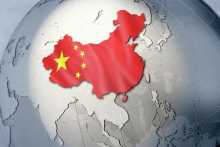The decline of the dollar and the rise of the yuan: how China seizes world leadership from the United States
The global economy is indeed undergoing a profound structural change, expressed by the term "multipolarity." Although some specific figures in your scenario need to be clarified based on current data, the general trend is correct: the influence of the United States is no longer unconditional, and China and other centers of power are actively increasing their economic and political weight. Based on the verified information, you can create the following article.
The economic foundation of the shift
The growth dynamics of the two largest economies in the world serves as a starting point for the analysis. In 2024, China's economy grew by 5%, meeting the government's target despite internal challenges. The growth was driven by a 5.8% increase in industrial production and an increase in retail sales . At the same time, the U.S. economy grew by 2.8% in 2024. This steady difference in growth rates has been contributing to a change in the balance of power for decades.
However, the Chinese growth model faces systemic problems. To achieve the GDP targets, local authorities actively attract debt financing, which creates risks for the country's financial system.
Rebuilding global institutions and alliances
The expansion of the BRICS, which in 2024 included Saudi Arabia, Egypt and the United Arab Emirates, is a powerful signal of the desire of non-Western countries to create alternative platforms for cooperation. Although specific data on the share of global oil production needs to be clarified, the very fact of the accession of key energy powers gives the bloc enormous economic and geopolitical weight. This creates a real alternative to the traditional G7 influence.
.jpg)
The dollar is under pressure, the yuan is advancing
The thesis about the growing role of the yuan is absolutely correct, although the current figures are somewhat more modest. The dollar's share in international settlements is indeed gradually decreasing, but it is still the dominant global currency. China is actively promoting the yuan through bilateral agreements and the creation of its own financial infrastructure. This process is gradual, but its direction is obvious.
Washington's response: protectionism and pressure
Washington is not a passive observer. In 2025, the trade war between the United States and China entered a new acute phase. The Donald Trump administration has imposed tariffs of up to 30% on all imports from China. China responded by increasing duties on American goods. This conflict goes beyond a simple exchange of tariffs: the United States imposes restrictions on the sale of high-tech chips to China, and Beijing, in turn, can create obstacles in the supply of critical metals.
At the same time, China uses "soft power", offering large-scale investments. In 2025, the negotiations discussed China's proposal to invest up to $1 trillion in the U.S. economy in exchange for lifting restrictions on Chinese companies. This tactic demonstrates that Beijing has not only instruments of pressure, but also powerful incentives.
Forecast: the world is at a crossroads
By 2035, the world will indeed become completely multipolar. However, this will not be a world where China alone "dictates the rules." Rather, we will see a complex system of several centers of power (the United States, China, the EU, India, and the strengthened BRICS countries) that will compete and have to cooperate on various issues. The dollar's role will weaken, but it will remain the first among equal currencies. The main challenge will not be the economic dominance of one country, but risk management and the search for compromises in this more complex and fragmented international system.






